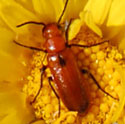Arizonensis --> Sonoran Desert Naturalist --> Sonoran Desert Places --> Estrella Mountain Park --> Estrella Mountain Wilderness
|
One of four wilderness areas within a short driving distance of Metropolitan Phoenix, the Estrella Wilderness is perhaps the least visited and the most difficult to reach. For sure, during much of the summer this is an inhospitable desert location with extreme temperatures, little shade and no water. Yet as Edward Abbey said, there is 'there is something about the desert'. The word ‘estrella’ means star in Spanish and indeed the highest peaks in this range reach for the stars above the low surrounding deserts. The name could also refer to the abundant, sparkling flakes of mica present in the Precambrian schist. The eastern half of the range is part of the Gila River Indian Community and access there is restricted. The northwest quarter of the range lies within Estrella Mtn. Regional Park and is now bordered by housing developments and has been incorporated into the city of Goodyear. Access to the Wilderness Trailhead is at the east end of the broad Rainbow Valley south of Goodyear, Arizona. Various agricultural, livestock and housing schemes have disrupted the desert soils in the valley allowing for erosion, patches of weeds, and piles of junk. Prevailing winds from the west have deposited a thick layer of sand and silt along the windward side of the north-south oriented Estrella Mountains range. This low desert against the mountains is the closest sandy desert to the Phoenix area and luckily it is protected from development by wilderness designation. Few other flat areas in this area are left in such a pristine condition. Caution: Deep sand in the roads requires four wheel drive. From Phoenix drive west on I-10 and exit at Estrella Parkway. Turn south and drive to Elliott Road in the Estrella Ranch development. Drive west on Elliot about 2.6 miles to Rainbow Valley Road. Rainbow Valley Road runs south through the valley - after 9 miles turn east on Riggs Road. Now 5.3 miles east on Riggs Road, with the last several miles narrow and sandy, ending at the power lines. Two miles south through deep sand along the power lines, and then another two miles east through more sand to the BLM Trail Head and kiosk. Be sure to sign the trail register if you hike. |
View Estrella Mountain Wilderness in a larger map Sponsored Links |
Field Trip Reports:
|
Rock HibiscusSponsored LinksCalifornia Checkerspot |
|
Sonoran Collared Lizard (Crotaphytus nebrius) - Photo by Mike Plagens. |
ReptilesIn order of Abundance:
|
CactiMore common species first ...
|
Buckhorn Cholla |
![]()
Shrubs and TreesIn order of Abundance:
|
Lance-leaf DitaxisSponsored LinksChuparosa |
![]()
White Flowers
Pink/Lavender Flowers
Orange Flowers
|
Yellow Flowers
 |
Red Flowers
Blue/Purple Flowers
Greenish Flowers
|
Page 1 - Estrella
Mountain Park
Sonoran Desert Naturalist
Home Page
Desert Places
Field Guide
Copyright Michael J. Plagens, 1999-2009